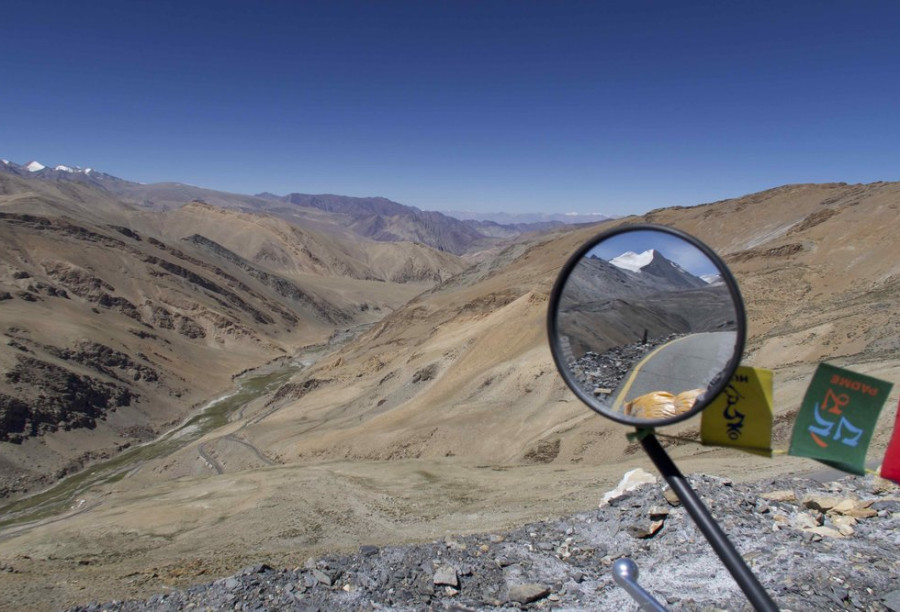
Riding with a rented Royal Enfield Himalayan through Nubra Valley
4 September 2018Easily reachable from Leh by chartered jeep or with your own wheels lies, behind the mighty Khardung La pass, the beautiful Nubra Valley. The deep-cut Shayok and Nubra river valley allows for incredible scenery with stark, naked mountains that are hugged by green oasis villages.
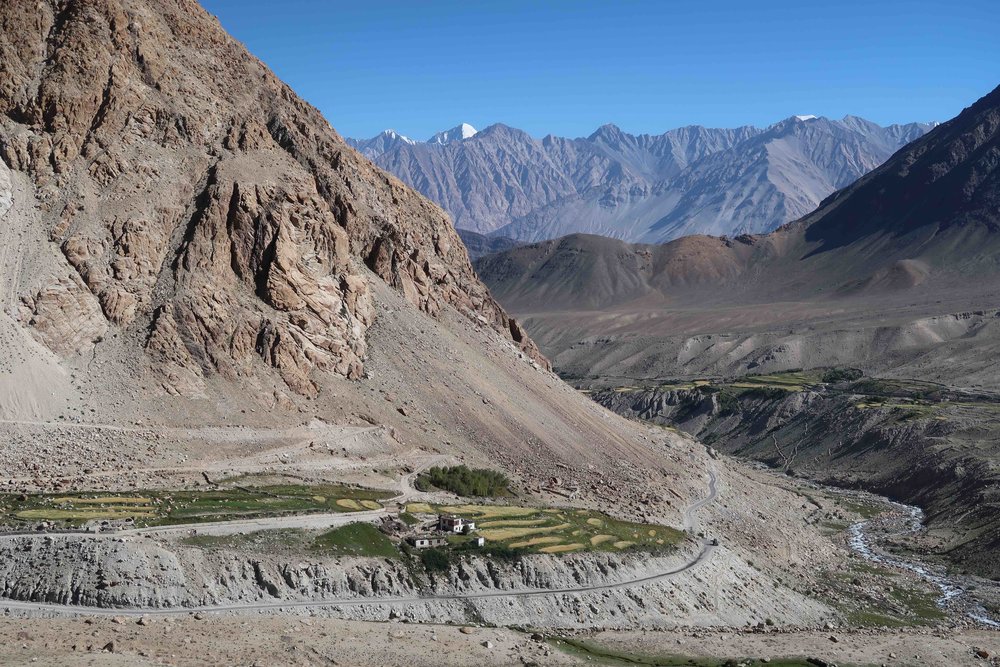
The mighty Khardung La
The classic and most common way to reach Nubra Valley from Leh, is to scale the Khardung La pass. This pass at 5602 meters altitude is supposedly the highest motorable pass in the world. The road starts to zigzag upwards almost immediately after you leave Leh.
Note that if you want to enter Nubra valley as a foreigner, you need a permit. This is easily arranged by an agent in Leh for about 600 rupees. The permit consists of a fee for the agent, a 300 rupees Ecological tax, 100 rupees Red Cross contribution, and a 20 rupees per day wildlife fee.
The permit is valid for up to 7 days and is checked at police checkpoints, which are at Km 24 and Km 53, before and after the Khardung La pass. You have to show the police officers your passport and handover 1 copy of the permit.
Additionally, on route to the top of the pass, there is a checkpoint of the motorbike union of Leh. They check the license plate of your motorbike and only allow motorbikes with a Ladakhi license plate into Nubra. They'll force you to leave your rental bike in Leh and rent another bike with a Ladakhi license plate.
My rental bike did not have a Ladakhi license plate, but I was definitely not planning to leave my bike behind in Leh and rent another one, so I left Leh in the early morning between 05:30 and 06:00. At that time the post is unmanned, and you can ride into the valley on your own bike without a Ladakhi license plate.
The sand dunes of Hunder
From Leh, I first rode to Diskit, a village with a small bazaar and a petrol station with an antique pump. Seven kilometers after Diskit is the village of Hunder. With a population of only 1200 people, you feel lost in the amazing greenery while being surrounded by soaring cliffs. It is worth staying here for the night.
Hunder is located 130 kilometers from Leh, and it took me 4 hours to get there. The granite outcrops enclosing the village crumble and weather into small quartz particles, creating their own version of sand dunes. You can spend the afternoon in the dunes riding two-hump Bactrian camels, which is a very popular activity for local Indian tourists.
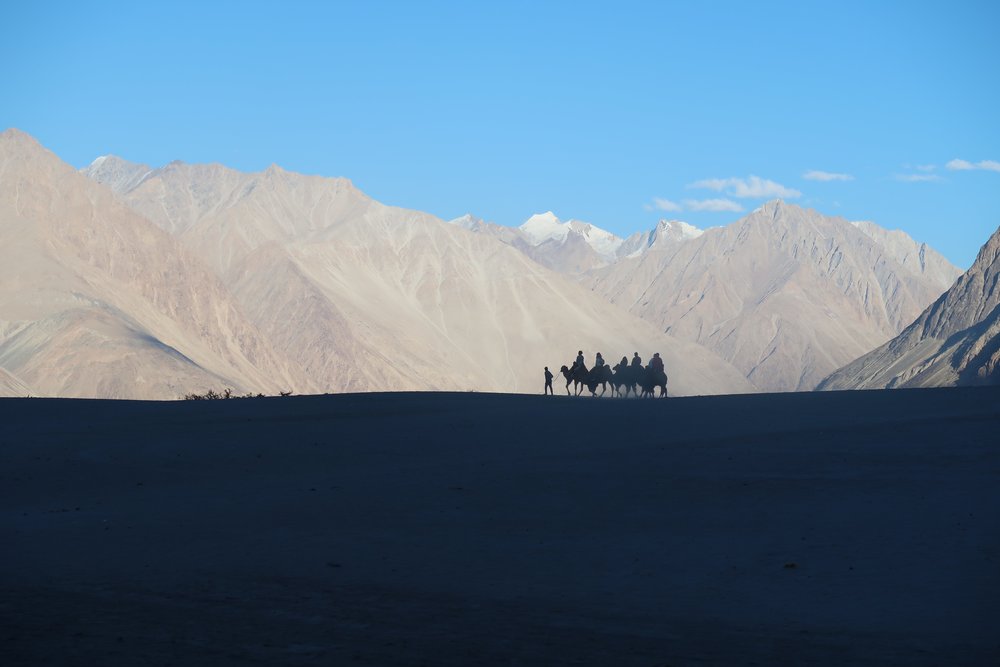
Hunder has plenty of guesthouses, but the best ones fill up quickly with (local) tourists. Even in the low season, you will have trouble finding a place to sleep in one of them. The best thing to do is to arrive early or book ahead.
When I visited Hunder, I stayed at the Apple Cottage. A wonderful place with its own flower and vegetable garden. From the garden, the owners whip up an amazing dinner in the main building. Dinner is included in the price as is their breakfast when you stay there. You'll sleep in a large tent, complete with an attached bathroom with warm water. Just be prepared to be woken up at 06:30 by staff banging on your tent while screaming “Chai! Chai!” Morning and afternoon tea is also included in the price and they are very eager to get it to you.
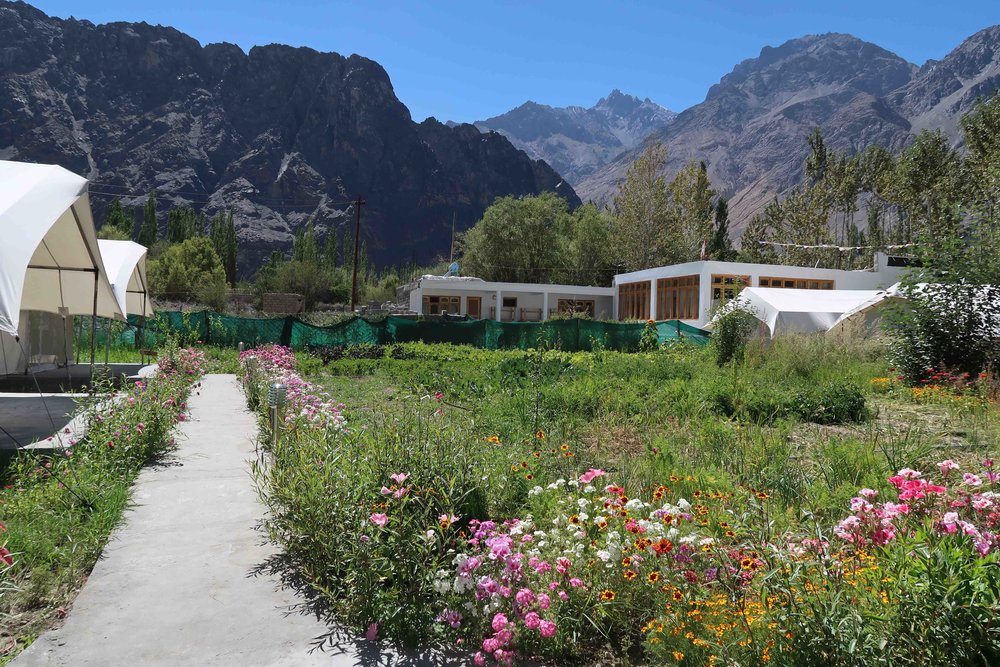
Reaching old Baltistan
From Bunder, I rode another 2,5 hours on winding roads with overhanging rocks. My destination for that day was Turtuk. I crossed the wild and turbulent Sahyok river several times on what seemed to be very dodgy and weak bridges. After passing over the magnificent mountains, I reached my destination for that day.
Turtuk is only 7 kilometers from the border with Pakistan. In this area, you will find many military bases and every day you will encounter, or be stuck behind, army truck convoys. Sometimes they consist of up to 40 trucks. In the past, Turtuk was part of Baltistan which later became Pakistan. In 1971 India seized the town back from Pakistan.
The people in Turtuk still see themselves as being Pakistani or to be more precise as Balti. They still speak Balti, are Muslim and their Balti culture and cuisine are very much alive. There is a small Balti Heritage Site. In this traditional Balti house from the late 18th century, you will find many items that are centuries old. The gentleman who works there is more than willing to tell you all about the different items.
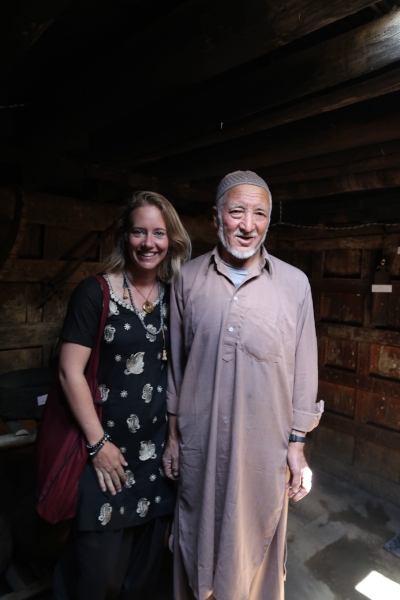
He is also the holder of the key to the natural refrigerator. This storage place is known as nangchung in Balti. It is a small and low stone bunker with small gaps that allow cold air to pass through. The locals use their nangchung for the storage of butter, meat, wool and milk. Stepping inside such a large natural fridge is truly something else.
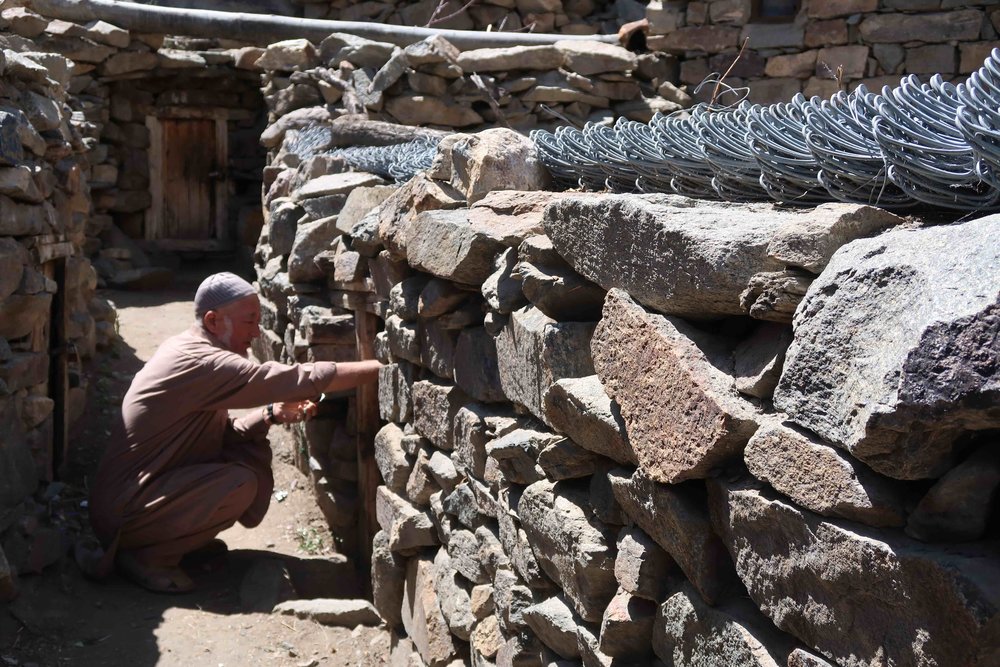
The best way of passing your time in Turtuk is to just wander around the village, strolling through the narrow little alleyways while observing local village life. The valley itself is dotted with apricot trees, so don't let the opportunity pass by to pick some apricots of these trees. They are delicious!
The organic apricot juice they sell in small shops and restaurants is rich in flavor. For sure, you'll be asking for more. You can also find lots of restaurants here that offer typical Balti dishes, in which buckwheat is the shining star ingredient. You'll see the white fields with buckwheat all through the valley.
For stunning views over the valley and Turtuk, you can make the 20 minutes walk towards the Buddhist monastery, which is sitting on top of a small hill overlooking this peaceful town.
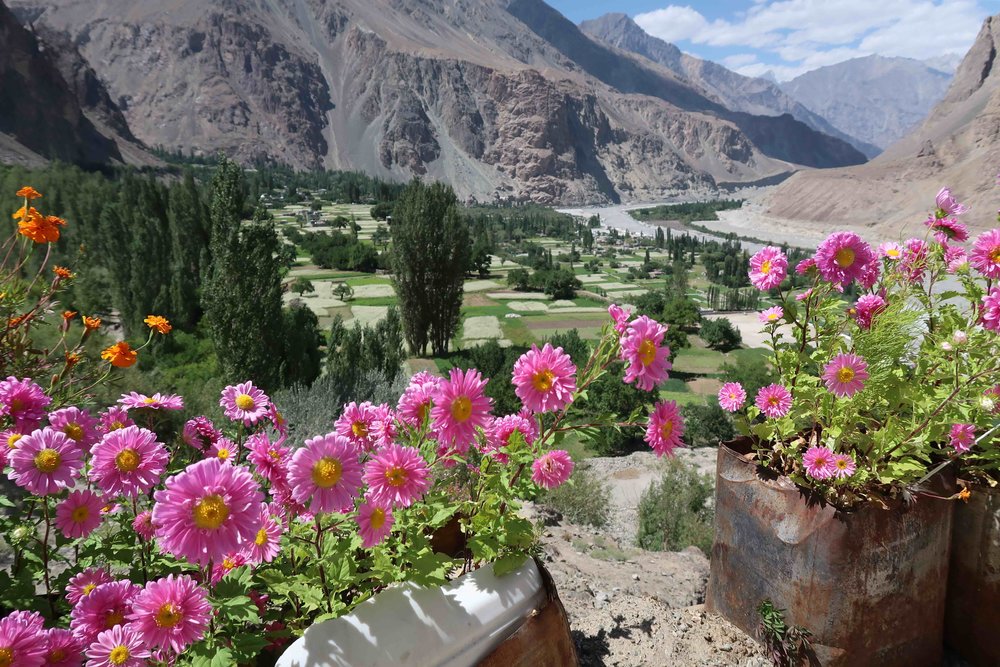
A dynasty of Khans
Another great museum to visit in Turtuk is the 15th-century palace that still belongs to the Khan clan. They have ruled Baltistan for a long time. In contrary to the Balti Heritage site, the palace sits on the other side of the river, which divides the town into two parts. A wooden footbridge connects the two sides of Turtuk.
You can find the palace easily, as a large wooden carved eagle is overlooking the entrance gate. It has multiple items on display that were worn by the Khans. I personally found my meeting with the current Khan the most interesting part of my visit. His name is Yabgo Mohd Khan Kacho.
Yep, that's right. He is a Khan and still lives in this palace.
The Khan-family tree is painted on one of the walls and traces back to the first ruler of West Turkistan. Yabgo's English is somewhat limited, but you'll get a good idea of his family's fascinating history.
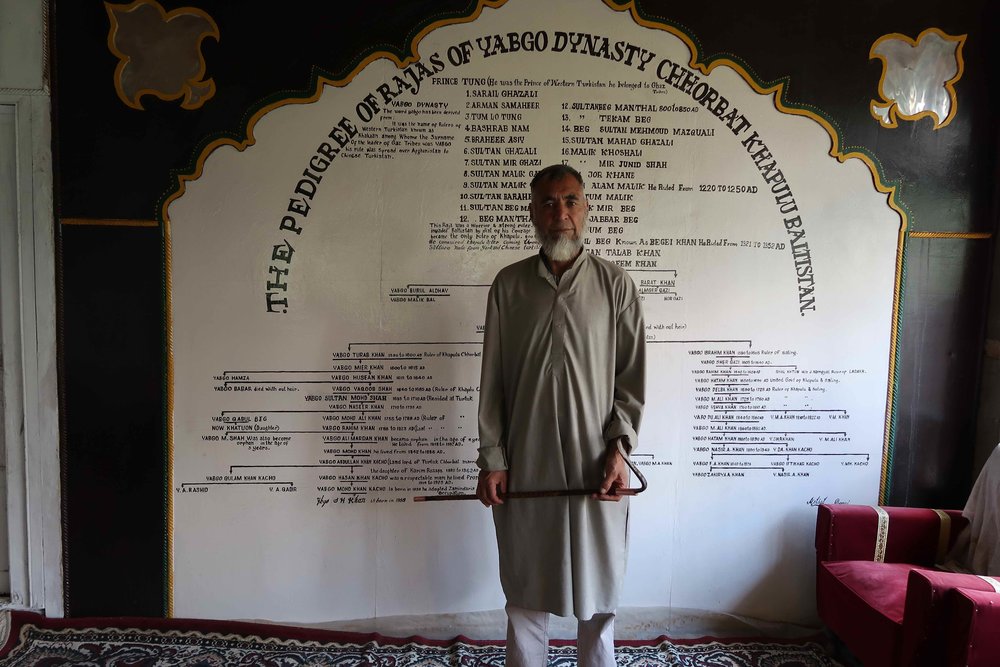
Beste Noraly, vandaag zag ik je onthulling van de XT 600 voor het nieuwe avontuur, een paar jaar geleden kocht ik een XT 600 en dacht toen, dat is iets voor jou, 140 kg droog en geen elektronica,behalve de ontsteking, het probleem met de huidige motoren is het hoge gewicht en al die elektronika die kapot kan gaan, de Honda was een goed keus, licht en weinig chips aan boord, een KTM is prima maar niet voor jou avonturen en de nieuwe Himalayan is gewoon te zwaar. Ik heb ook een XT 500 maar die moet je aantrappen wat soms niet handig is. Dit voorjaar heb ik weer een OTR trip gemaakt in Sardinie op de XT 600 met een motormaatje en op mijn leeftijd (79) ging dat nog prima! Volgende keer misschien op een Honda XLR 125 uit 1986.
Hartelijke groeten,
Arnout Doyer

https://www.dropbox.com/scl/fi/0vpw61dcpplesg27lct1g/vvvv.jpg?rlkey=xx6of797q6wv0ldgal54frxr6&dl=0
Thank you, for this wonderful story of this remote region.
I just started to reed your Blogs and it taste for mor.
Greetings.
Jan.

Nice to read your blogs, having watched all your S1-S5 vids on a binge. Will catch up watching with you before/in/(and with) Alaska. So much talents! Riding, filming, editing, presenting, writing, photography. Djeez, you’ve got it all!

Noraly, you are an inspiration, and your travels makes me dream so high that sometimes I feel I'm on the road riding alongside with you. keep on going. Thanks for you sharing.
HI there, I have watched your videos off and on but got really hooked up with your Patagonia Adventure.
It has been just superb watching your videos of South American countries.
I will not be able to do what you have done for multiple reasons, but trust me, you have lived my dreams and I cannot thank you enough for that.
Keep going and keep making this world a beautiful place.
Kind regards
I suppose Hunder and Bunder are different spelling of the same place. I start dreaming of travelling the world when I read your stories. Look forward to your training lessons.
It has been a while, but I still have good memories of these early days traveling on a motorbike!

I’m really enjoying reading about the early travels. You’ve really put a lot of work into this site. I must give you 100’s of thumbs up on the website👍🏼👍🏼👍🏼👍🏼

I'm your subscriber on YouTube. Glad to read your experiences here. Keep going👏. Inspire a lot of people like me. Love from India❤️

Interesting and imformative story, i did'nt know you had visited India, how did the Enfield perform on your travels ?
It all started in India :-)... The Enfield did really well! Perfect bike for this adventure.



